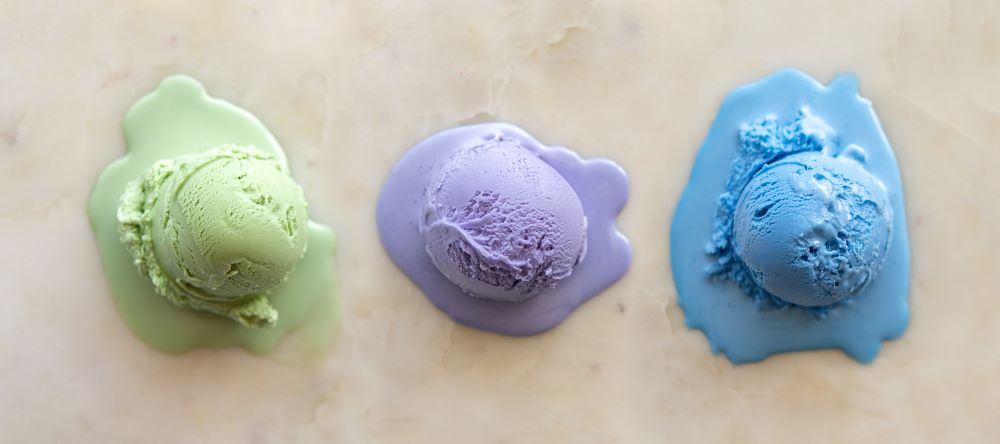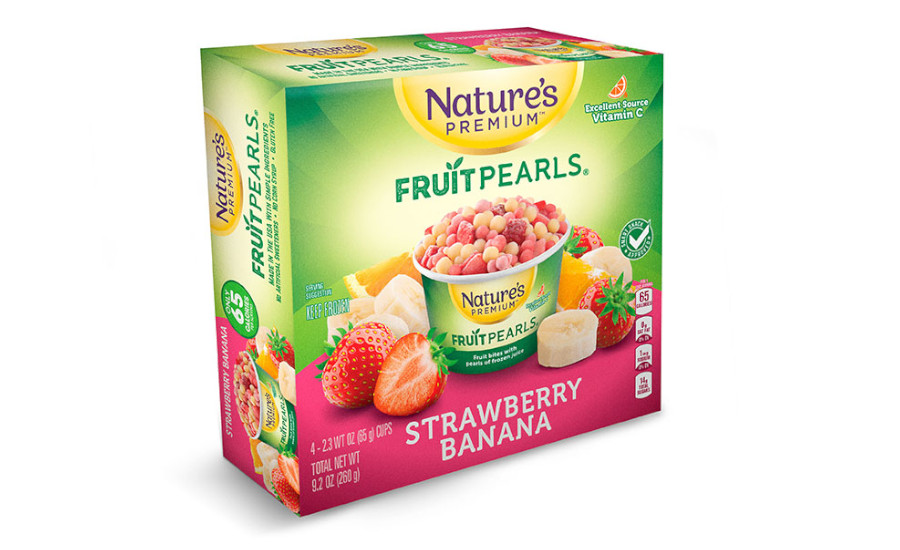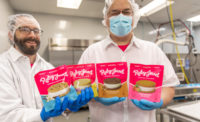The global dairy alternatives market was valued at $23 billion in 2021 and is estimated to reach $65.33 billion by 2030, growing at a compound annual growth rate (CAGR) of 12.3%, according to Pune, India-based Straits Research.
North America is expected to grow at a similar CAGR of 12.25% during the forecast period, with the milk segment owning the highest market share, expected to grow at a CAGR of 12.4% per annum, according to Straits Research.
Alice Lee, technical marketing manager, GNT USA LLC, Dallas, N.C., adds that consumer demand for dairy alternatives is surging globally, including in the United States, with plant-based milks and proteins being popular among 31% and 38% of U.S. adults, respectively, according to a recent global trend report from Mintel.
“In the last four years, oat-based products have exploded in popularity. While the oat craze started in plant-based milks, it’s also growing in popularity in other plant-based dairy segments as a steady stream of plant-based yogurts, creamers, and ice creams enter the market.”
— Christine Addington, principal technical account manager for Cargill
The consumer
Capitalizing on the trends, several processors are already manufacturing alternative dairy as a supplement to existing dairy products in their portfolio. “There are many consumers that are vegan or lactose intolerant and desire or need to avoid dairy products per their dietary restrictions,” says Hal Woodyard, senior vice president, sales and business development, Sebring, Fla.-based CitraPac Inc.
Growth on the alternative side can be attributed to several demographics. Dennis Reid, vice president of Business Development and Specialty Ingredients, Washington, Mo.-based Osage Food Products, points to millennials and younger-generation consumers “who are advocates of plant-based alternatives because they are viewed as more healthy and more sustainable, with both environmental and animal-welfare friendly perceptions.”
Consumers who identify as flexitarians — a combination of the words flexible and vegetarian — who enjoy animal-based sparingly, are another growth driver. According to BENEO’s 2023 consumer survey, 10% polled in the U.S. identify as vegans, vegetarians, or pescatarians. However, more than twice as many consumers polled (21%) identify as flexitarians, of which almost half (45%) already buy plant-based dairy alternatives.

“With almost one in five (18%) flexitarians in the U.S. additionally interested in buying such products in the future, there is an opportunity for more growth in dairy alternatives among flexitarians in the U.S.,” reveals Myriam Snaet, head of market intelligence and consumer insights at BENEO, whose North American headquarters are located in Parsippany, N.J.
The growth of dairy alternatives is not new. Christine Addington, principal technical account manager for Wayzata, Minn.-based Cargill, reveals the plant-based, dairy-alternative space has been one of the most dynamic categories for the last decade, growing from a small niche into a market segment with true mainstream appeal.
“Consumers are attracted to these products for a variety of reasons, spanning health perceptions, animal welfare concerns, environmental considerations and the simple desire to try new products,” she says. “As their popularity has grown, however, consumer expectations for taste, texture, and nutrition have increased, too. They’re looking for plant-based dairy alternatives that deliver similar experiences to their animal counterparts, including creamy mouthfeel, rich dairy-like flavors, and comparable nutritional profiles.”
There are certainly plenty of plant-based dairy options today, with many more being released. Plant-based dairy was easily one of the most talked about topics at the IFT FIRST show that took place in Chicago in July.

“At the recent IFT Show, it was evident that dairy alternatives have become the focal point of the industry’s innovation efforts,” says Mathew Brady, lead marketing specialist at Fenton, Mo.-based IFPC. “The demand for dairy alternatives has transcended niche markets and is now embraced by mainstream consumers, making it an essential segment for the food industry to cater to.”
Plant versus dairy
According to a study presented in July, plant-based alternatives nutritionally do not match those of traditional dairy products.
“Our results provide evidence that many plant-based milk alternatives are not nutritionally equivalent to cow’s milk,” states Abigail Johnson, assistant professor and associate director of the University of Minnesota School of Public Health Nutrition Coordinating Center, who presented her findings on the topic at Nutrition 2023, the annual meeting of the American Society for Nutrition.
“Based on these findings, consumers should look for plant-based milk alternative products that list calcium and vitamin D as ingredients. They may also want to consider adding other sources of calcium and vitamin D to their diets,” Johnson added.
The study included nutrition information from nutrition facts labels and ingredient information for 233 plant-based milk alternative products from 23 different manufacturers. For each product, the researchers applied a nutrient calculation program to estimate full nutrient information.
“Our findings point to a need to ensure that consumers are aware that many plant-based milk alternative products in the marketplace today are not nutritionally equivalent to cow’s milk,” concludes Johnson. “Product labeling requirements and dietary guidance to the public are among the approaches that may be helpful in alerting and educating consumers.”
However, whether plant-based products live up to their dairy counterpart or not, dairy alternatives can have benefits, some of which are featured on labels.
“Lactose free has always been and continues to be the biggest claim, states Mark Robert, technical lead — dairy for London, UK-based Tate & Lyle. “It’s the original reason consumers began seeking dairy alternatives decades ago, whether it was for a lactose intolerance or just not having a desire for it. Now, we’re many years into this trend, and many consumers, no matter their health situation, just want to avoid lactose.”
“Natural,” “clean-label,” “non-GMO” and “gluten-free” are among other claims appearing on a majority of plant-based dairy labels, reveals Joe O’Neill, vice president of sales and business development at A&B Ingredients, Fairfield, N.J.
“Another growing category is products made without ‘synthetic preservatives.’ We see a growing interest among manufacturers and consumers in replacing synthetic preservatives with CytoGUARD plant-based extracts across all food categories, not just plant-based dairy products,” he says.
Claims around nutrition, especially protein, remain popular, Addington notes. “We field many requests from customers looking to achieve high protein claims, especially in the plant-based milk and smoothie space,” she relays. “Sugar claims are also gaining a foothold in this space, especially with plant-based yogurts and flavored plant-based milks. It makes sense. Consumers are attracted to plant-based dairy alternatives because they perceive them as more healthful choices.”

Taking these claims one step further, BENEO’s 2021 survey shows that globally, four in five flexitarian consumers of plant-based dairy alternatives would find a “natural ingredients” claim convincing (82%). Other convincing claims in the dairy alternatives category include “easy-to-digest” (79%) and “additive-free” (77%). Claims related to the nutritional profile, e.g., the fat, sugar, or fiber content of the dairy alternative product are also proving popular among flexitarians,” Snaet tells Dairy Foods.
Zeroing in on dairy products with almonds for health and wellness, according to the Innova Global New Product Introductions Report 2022 released May 2023, at 49%, “gluten free” is the top health and choice claim, followed by vegan (45.5%) and plant-based (43.5%, states Charice Grace, manager, trade marketing and stewardship at the Almond Board of California. Additionally, “creamy,” at 7%, is the top texture claim for all dairy introductions with almonds, followed by “silky” (4.5%).
Latest trends
With the market for dairy alternatives fully established, dairy processors should follow the latest trends, particularly since the popularity of a particular dairy alternative can change rapidly.
Overall, wellness and functional benefits are major goals consumers are seeking, Robert says. “The major trend is including functional ingredients in plant-based dairy alternatives such as immunity from zinc and lactoferrin and or brain/cognitive health from magnesium or omega-3 fatty acids such as DHA,” he notes.
“Mental fitness, the connection between mood and food. That’s a trend for dairy alternatives and all categories,” adds Alvaro Velasco, Tate & Lyle’s category strategy manager — Dairy North America. “Plant-based dairy in particular has a tremendous opportunity to meet this consumer interest and demand.”
Zeroing in more, a leading trend in dairy alternatives is a greater investment in exciting flavor launches, especially in frozen desserts, suggests Lee. “Consumers are not willing to sacrifice visual appeal and taste in favor of better-for-you dairy alternatives, so introducing new flavors that provide indulgent and fulfilling experience satisfies the younger demographics’ emotional desire for comfort, fun and adventure,” she states.
Regarding specific products, search no further than the rise of oat-based products, with both Addington and Brady pointing it out.
“In the last four years, oat-based products have exploded in popularity. While the oat craze started in plant-based milks, it’s also growing in popularity in other plant-based dairy segments as a steady stream of plant-based yogurts, creamers and ice creams enter the market,” Addington states.
Beyond oat-based products, pea protein is another rising star, as it’s increasingly become the go-to ingredient for protein fortification in the plant-based space, she adds. “If we zero-in on plant-based milk alternatives, we still see offerings with just a gram of protein. Dairy milks consistently deliver 8 grams of protein. Ultra-filtered milks deliver even more. Pea protein is helping brands close that gap.”
Pea proteins are also a favorite of A&B Ingredients, due to their low anti-nutritional factors and low allergenicity compared to soy and wheat, O’Neill says.
“Functional benefits of pea proteins include high solubility, emulsification properties, clean taste, and an excellent mouthfeel,” he relays. “Emulsification is a key functional aspect in the manufacture of non-dairy creamers. Research has shown that pea protein has superior emulsification properties in plant-based coffee creamers and in plant-based butter spreads, leading to improved quality, stability and mouthfeel.”
Pectin is not a new ingredient, but is another key component of many plant-based dairy alternatives, Addington says. “Perceived as label-friendly by consumers, pectin’s functional benefits include assisting with syneresis control and improving mouthfeel,” she relays.
Brady adds non-traditional dairy alternatives made from hemp, flaxseed and coconut are gaining popularity as well.
Although less popular thus far, BENEO is seeing some interesting developments in plant-based cheese and expects consumer demand to increase during the coming year. “To help manufacturers tap into this emerging trend, the BENEO-Technology Center has been exploring opportunities in plant-based cheese and has developed a new recipe for a feta-like cheese alternative,” notes Snaet. “Using a unique combination of BENEO’s inulin, starch, and faba bean protein ingredients, the team has created a clean-label, plant-based product with a brittle, feta-like texture and a pleasant taste.”

Lee agrees plant-based cheese is definitely something to watch. “Even with the growing interest in dairy alternatives, dairy-free cheese remains a niche product, consumed by only 19% of U.S. adults. This presents an ideal opportunity for brands seeking a competitive edge in the plant-based dairy market,” Lee notes. “According to the [aforementioned] Mintel report, Gen Z, especially 25 to 34-year-olds, show significant interest in dairy-free cheese alternatives.”
Fruit is another plant-based option that can deliver solutions for dairy-free taste experiences and textures. “For instance, our Fruit Pearls line has two varieties for dairy-free consumers, notes Woodyard. “Strawberry-Banana and Wildberry are each made with real fruit. Consumers that would have otherwise turned to ice cream or yogurt can now enjoy a refreshing snack that is dairy-free.”
Satisfying sustainability
Dairy processors continue to name sustainability as a major future goal. How to achieve these goals is challenging though, and dairy alternatives may provide a boost.
According to IFPC’s Brady, “Plant-based ingredients generally have a lower environmental footprint compared to animal-based products. The transition to dairy alternatives allows processors to reduce their carbon footprint and overall environmental impact, contributing to a greener and more conscientious future.”
A study from Oxford University recently published in the journal Nature Food concludes vegan diets resulted in 75% less climate heating emissions, land use and water pollution than meat-based diets. The study also found that vegan diets reduce wildlife destruction by 66% and water use by 54%.
“To satisfy consumer demand for sustainable products, it’s essential for manufacturers to collaborate with suppliers who take sustainability seriously, enabling producers to offer clean- label products that consumers trust,” maintains GNT USA’s Lee. “In 2022, GNT published its industry-leading Sustainability Report that outlines its unwavering commitment to improving its sustainability initiatives across all channels by 2030.”
Plant-based raw ingredients have a significantly lower environmental impact in terms of water usage, land usage and greenhouse gas emissions, A&B Ingredients’ O’Neill adds. “Soy and oat milk are the most environmentally friendly plant-based products,” according to OurWorldInData.org,” he states. “For example, soy milk requires 90% less land and almost 95% less water than traditional milk. Using natural preservatives can help manufacturers reduce food waste and further promote the sustainability of our food systems.”
Osage Food has developed a line of SolvPro blended plant proteins that help to meet the needs of the growing vegan population and deliver equivalent nutrition to milk-based ingredients. “These systems deliver a PDCAAS of 1.0 with all the essential amino acids at the appropriate levels,” says Osage’s Reid. “Some of these systems are based upon sustainable protein sources that would qualify as upcycled foods, with more than 10% of the recipe being upcycled-certified ingredients. By using more and more of these types of ingredients, processors can more easily meet their sustainability goals.”
Precision fermentation may also have a big impact, Cargill’s Addington maintains. “We’re already seeing its potential with our EverSweet stevia sweetener, which offers a dramatically lower carbon footprint and a significant reduction in water resources compared to other biological-based sweeteners,” she states. “Stevia leaves contain dozens of sweet components, but two of the best-tasting, Reb M and Reb D, comprise less than 1% of the stevia leaf. Cargill and joint venture partner dsm-firmenich pioneered a more sustainable production process using fermentation to produce EverSweet instead of a more resource-intensive crop-based system.”
Almonds have a standout sustainability story on their own, the Almond Board of California’s Grace stresses, adding they’re grown with climate-smart strategies intended to help manufacturers meet long-term sourcing sustainability goals.
“Compared to other fruit and nut trees grown in California, almonds store one of the highest amounts of carbon per acre,” she concludes. “An acre of California almond trees captures and stores 1.18 metric tons of CO2 annually, which is 40% more per acre than the annual carbon storage of an acre of U.S. forest. When you look at carbon stored in all the almond trees growing in California in 2022, they store 30 million tons of stored CO2.”




